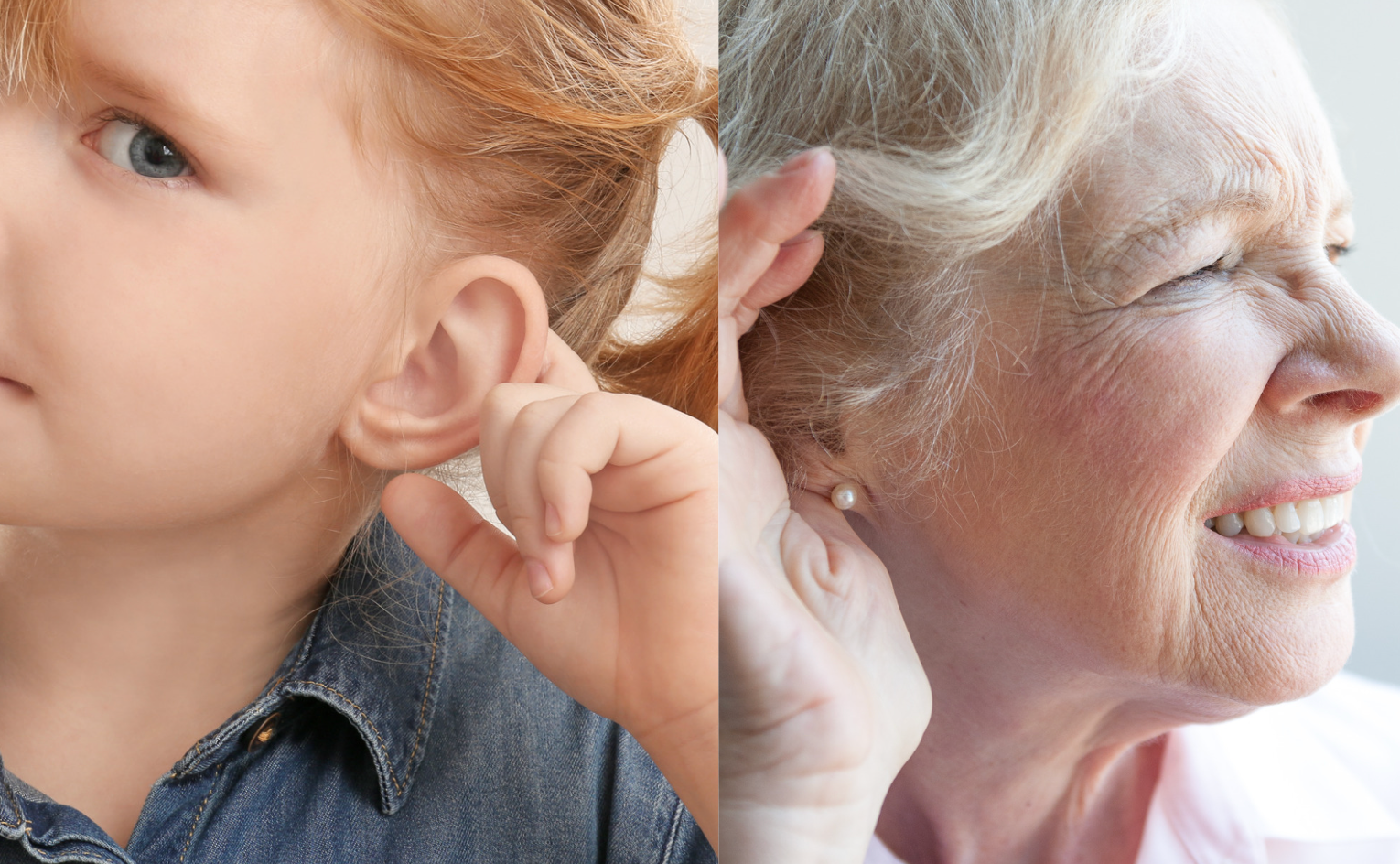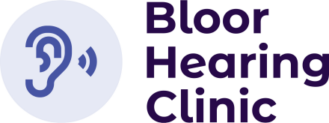
Our Blog
Guide: Conductive Hearing Loss vs Sensorineural Hearing Loss

There is a common misconception that hearing loss only affects older adults due to factors like noise exposure, ear infections, and even genetics, not just aging. While those factors are significant, they are not the sole causes. Likewise, they not only affect older adults, but they can happen in childhood, adolescence, and young adulthood. The belief that hearing loss is an “older person’s problem” can lead to individuals delaying professional help, worsening the condition.
Not all types of hearing loss are the same. Two primary forms, conductive hearing loss and sensorineural hearing loss, affect different parts of the ear and require different treatment approaches. Because hearing loss can develop gradually and may not always be noticeable, regular hearing screenings such as the Toronto hearing test are important, regardless of age.
In today’s guide, we will explore the differences, causes, symptoms, and treatment options of conductive and sensorineural hearing loss. First, let’s understand why knowing their distinctions is essential and their impact on our daily lives.
Why Distinguishing Between Conductive and Sensorineural Hearing Loss Is Important
Identifying the type of hearing loss is crucial for several clinical, diagnostic, and treatment-related reasons. It helps guide further investigations, proper care, and whether a Toronto hearing aid is necessary.
For instance, sensorineural hearing loss (SNHL), especially when it occurs suddenly and without a clear cause (known as idiopathic sudden hearing loss), may require immediate treatment to prevent permanent damage. On the other hand, moderate hearing loss caused by chronic middle ear problems may benefit from hearing aids or surgical correction, depending on whether it’s conductive or mixed hearing loss in nature.
Essentially, knowing whether the hearing loss is conductive or sensorineural is essential because the cause, treatment, and outcome can be very different. Proper distinction leads to better-targeted care, improved patient outcomes, and the right treatment, whether medical intervention, hearing aids, or cochlear implants.
Let’s Review: Definition of Conductive Hearing Loss
Conductive hearing loss occurs when a problem prevents sound waves from traveling through the outer ear to the inner ear, where processing happens. It is often treatable or reversible via medical or surgical means. Conductive losses often have a better prognosis if treated early.
From a patient’s point of view, conductive hearing loss feels like your ears are plugged or sounds are muffled, as if you’re hearing through a barrier. Speech may sound quiet but still clear when made louder. This type of hearing loss often fluctuates or improves with treatment.
In a hearing test or audiogram, this hearing loss type is identified by a gap between air conduction and bone conduction thresholds—known as an air-bone gap. Bone conduction remains relatively normal since the inner ear is intact, but air conduction is impaired due to blockages or mechanical issues in the outer or middle ear.
What Are the Symptoms?
The common symptoms of conductive hearing loss include the following:
Trouble hearing faint or soft sounds
Muffled hearing, as if sounds are blocked
Sensation of fullness or pressure in the affected ear
Better hearing in noisy environments compared to quiet ones
Hearing impairment that improves when volume is increased
Perception of ringing or buzzing sounds (tinnitus)
What Is the Impact on Daily Life?
In children, even mild to moderate conductive loss (like from chronic ear infections) can delay speech and language skills if left untreated. They may have trouble hearing teachers, especially in noisy settings, affecting academic performance or attention issues. Consequently, they may seem inattentive or withdrawn due to difficulty hearing clearly.
In older adults, there will most likely be temporary frustration. Since many conductive issues are treatable, older adults may experience temporary communication issues until the underlying cause (e.g., wax, fluid) is resolved. If the hearing loss is unilateral or fluctuating, you can miss phone calls, doorbells, or conversations. Once treated, hearing can return close to normal.
What Are the Causes?
Below are some of the most common culprits behind conductive hearing loss:
Ear infections (common in children)
Eustachian tube dysfunction
Ear drum perforation
Tympanic membrane damage
Head trauma affecting the middle ear bones
External auditory canal blockages (wax buildup, tumors)
How Is It Treated?
For conductive hearing loss caused by middle ear infections, medications like antibiotics and surgical drainage (myringotomy) would help. Meanwhile, manual irrigation by a professional is the best course of action for earwax buildup.
As mentioned, conductive hearing loss is reversible. It may heal on its own (for perforated eardrums) or may require surgical repair. However, for cases where some hearing remains compromised, conventional hearing aids or Bone-Anchored Hearing Aids (for chronic outer/middle ear issues) will be especially useful.
How Is It Prevented?
Simple awareness and hygiene can prevent one from developing conductive hearing loss. Here are some tips:
Don’t insert objects (cotton buds, fingers, etc.) into the ear canal.
Do regular ear check-ups if prone to wax buildup.
Treat colds and sinus infections promptly to avoid middle ear infections (especially in children).
Keep ears dry and clean to prevent external ear infections (otitis external).
Equalize pressure during air travel or diving (yawning, chewing gum).
Avoid flying or diving when congested.
For kids:
Watch for signs of glue ear (muffled hearing, inattentiveness).
Vaccinations (e.g. pneumococcal, flu) help reduce ear infection risks.
Let’s Review: Definition of Sensorineural Hearing Loss
Sensorineural hearing loss happens when the inner ear or auditory nerve becomes injured or damaged. Most cases of sensorineural hearing loss are caused by such damage. It can be permanent hearing loss if not addressed properly. Sensorineural losses tend to be progressive or permanent and require long-term management.
People with sensorineural hearing loss often say they can hear sounds, but they’re distorted or unclear, especially speech in noisy settings. It’s like hearing but not understanding. Volume alone doesn’t help much; clarity is the main issue. This hearing loss often affects both high and low frequencies, depending on the cause.
In an audiogram, sensorineural hearing loss is marked by equally reduced air and bone conduction thresholds, with no air-bone gap. This indicates the problem is beyond the middle ear, within the cochlea or auditory nerve. The hearing loss can range from mild to profound and often affects both ears symmetrically.
🔖 For a detailed discussion, refer to our in-depth article on sensorineural hearing loss. |
What Are the Symptoms?
The best way to distinguish conductive from sensorineural hearing loss symptoms is by focusing on the nature of the sound distortion, associated sensations, and onset patterns. If conductive hearing loss makes sounds appear “muffled”, sensorineural hearing loss makes sounds loud but distorted. Here are specific symptoms.
Sounds seem distorted or unclear
Trouble hearing high-pitched sounds (like children’s voices)
Difficulty hearing in noisy environments
Profound hearing loss in severe cases
Bilateral hearing loss (if both ears are affected)
What Is the Impact on Daily Life?
Permanent SNHL in children, especially if undetected, can severely affect learning, reading, and communication skills. This can lead to isolation, lower confidence, and emotional challenges if support (e.g., hearing aids, speech therapy) is delayed. Early intervention programs, cochlear implants, or FM (Frequency Modulation) systems may be needed in school settings.
For older adults, common complaints of SNHL include “I hear but don’t understand,” especially in noisy places like restaurants or group conversations. There is an increased effort to understand speech, leading to listening fatigue, which is linked to cognitive decline and social withdrawal.
Management for SNHL often requires hearing aids or cochlear implants. However, even with devices, clarity may not fully return.
Here are some common symptoms patients struggle with:
Speech clarity, even in quiet settings
Sudden sensorineural hearing loss (in some cases)
Difficulty recognizing words, even at normal volume
What Are the Causes?
In SNHL, around 80%-90% of the cases have unclear causes. Since it is caused by damage to the inner ear, studies found the following factors as common reasons why this hearing loss type is developed:
Noise-induced hearing loss (prolonged noise exposure)
Age-related hearing loss (presbycusis)
Autoimmune inner ear disease
Congenital hearing loss (genetic or birth-related)
Blood flow issues affecting the inner ear
Head trauma
How Is It Treated?
Since SNHL can lead to permanent damage, it’s important to focus on rehabilitation. Hearing aids are the first line for mild to moderate hearing loss. They help amplify sound but may not fully restore clarity.
For severe to profound SNHL, or when hearing aids are ineffective, cochlear implants are sought after. They bypass the damaged cochlea to stimulate the auditory nerve directly. Patients can also leverage assistive listening devices for phone use, TV, and classroom settings (e.g., FM systems).
How Is It Prevented?
Noise protection, medication awareness, managing health conditions, and early response can prevent sensorineural hearing loss. Here are specific prevention methods:
Use earplugs or earmuffs in loud environments (concerts, machinery, shooting ranges).
Follow the 60/60 rule with headphones (max 60% volume, max 60 minutes at a time).
Choose noise-cancelling headphones over raising volume in noisy areas.
Avoid ototoxic drugs unless medically necessary (e.g. certain antibiotics, chemo drugs, high-dose NSAIDs).
Always inform your doctor if you have hearing issues before starting new meds.
Control diabetes, hypertension, and cholesterol — all linked to inner ear damage over time.
Stop smoking — reduces oxygen supply to inner ear structures.
Seek immediate help for sudden sensorineural hearing loss (SSNHL) — treatment is time-sensitive.
Conduct newborn hearing screenings and monitoring for at-risk infants (family history, NICU stay, infections like CMV).
Let’s Compare: Conductive Hearing Loss vs Sensorineural Hearing Loss
Feature | Conductive Hearing Loss (CHL) | Sensorineural Hearing Loss (SNHL) |
Cause | Problems in the outer or middle ear, preventing sound from reaching the inner ear | Damage to the inner ear (cochlea) or auditory nerve, affecting how sound is processed |
Common Causes |
|
|
Symptoms |
|
|
Treatment Options |
|
|
Prevention | Ear care, infection management | Noise control, ear protection |
👍🏻 Quick rule of thumb: If volume helps a lot, the hearing loss is likely conductive. If clarity stays poor even with volume, the hearing loss is likely sensorineural.
What Do Conductive and Sensorineural Hearing Loss Have in Common?
Both types of hearing loss result in some degree of hearing difficulty, whether it’s reduced volume, clarity, or both. The overall effect is that sounds are harder to hear or understand. They can both interfere with speech comprehension, especially in group conversations or noisy environments.
While the patterns differ in professional hearing tests, both types show measurable hearing loss across frequencies. They can be unilateral (one ear) or bilateral (both ears), depending on the cause.
How Your Audiologist Can Help
An audiologist plays a key role in diagnosing, managing, and supporting individuals with hearing loss — whether conductive, sensorineural, or mixed.
In practical terms, audiologists conduct hearing tests that measure hearing thresholds across frequencies to determine the type and severity of hearing loss. They assess middle ear function to help distinguish conductive vs sensorineural causes.
Moreover, audiologists also assess if a patient needs hearing aids. They select, fit, and fine-tune hearing aids or bone-conduction devices based on lifestyle, age, and hearing profile. Their ongoing support is particularly crucial, such as performing routine check-ups to monitor hearing changes, especially in progressive cases.
Distinguishing Conductive Hearing Loss from Sensorineural Hearing Loss
An audiologist conducts various tests to diagnose the type of hearing loss:
Bone conduction and air conduction tests
Auditory brainstem response test
Hearing thresholds evaluation
Physical findings from ear disease examinations
Treatment and Management
For conductive hearing loss, medical or surgical treatments may restore hearing. For sensorineural hearing loss, hearing aids or cochlear implants help improve sound perception.
Conclusion
An accurate diagnosis of conductive and sensorineural hearing loss ensures timely and proper treatment. Conductive hearing loss is often reversible, but it doesn’t mean you should take it lightly. Because permanent sensorineural hearing loss results can last for a much longer period, it requires a more rehabilitative approach such as using hearing aids and assistive devices. With some awareness, you can improve your quality of life and hearing outcomes in surprising ways.
